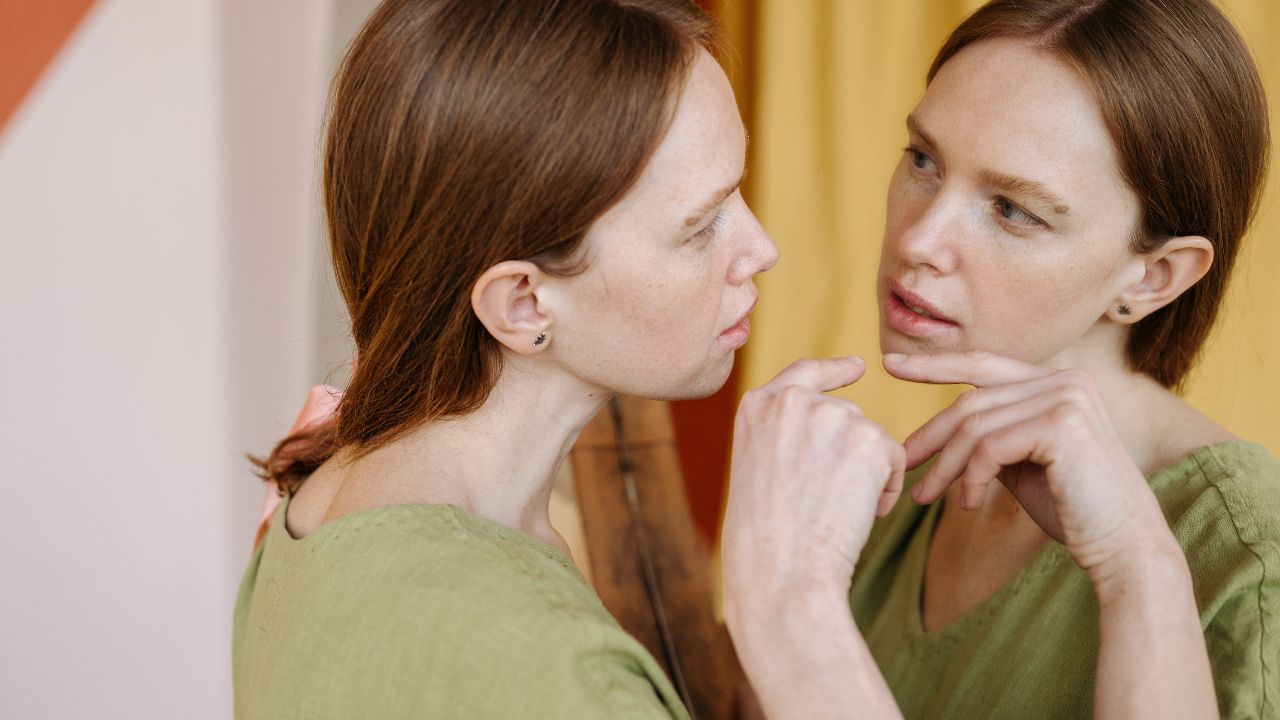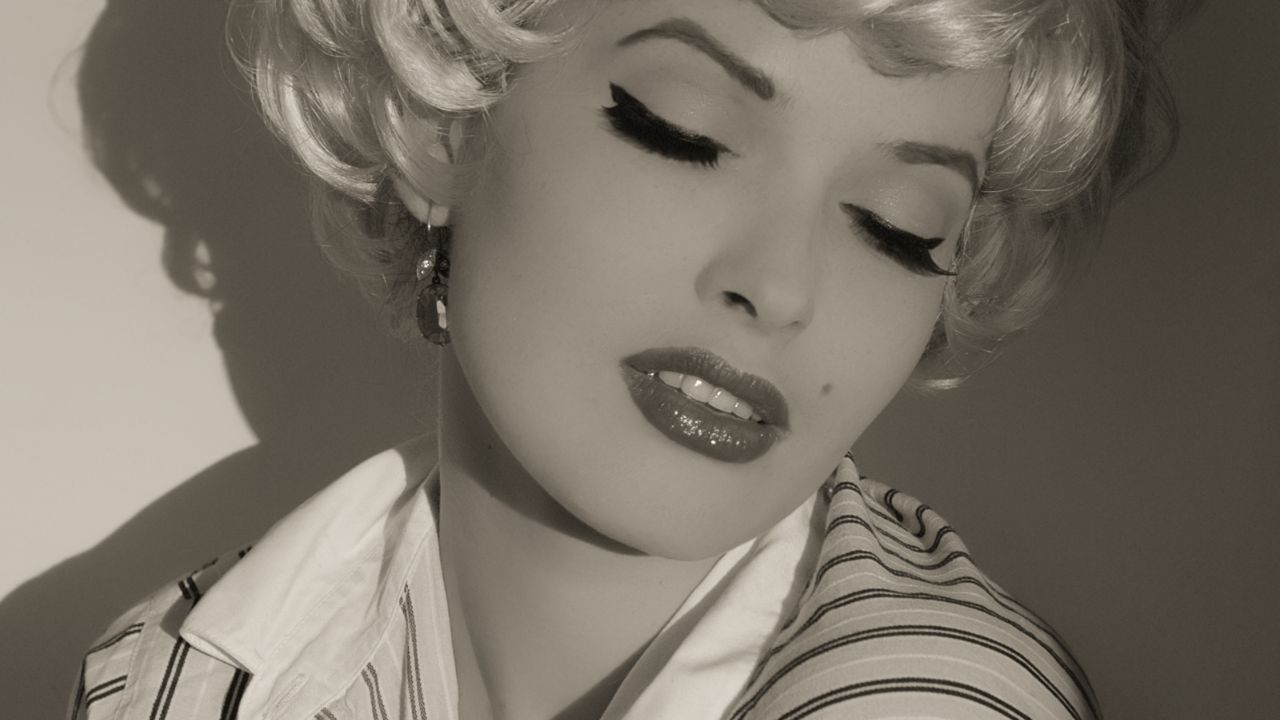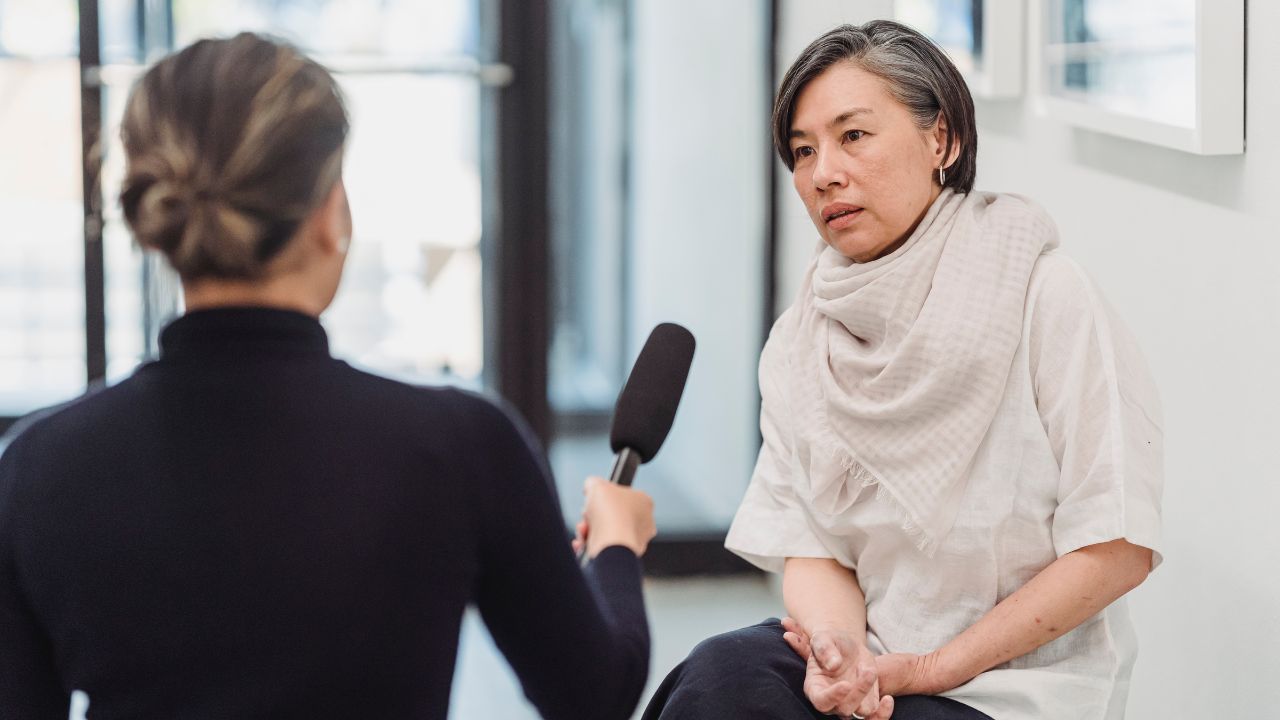Public Speaking vs. Speaking on Camera: What is Different?
Public speaking and speaking on camera are both forms of communication that involve talking to an audience. However, there are some key differences between the two deliveries.
The most significant difference is the audience. When you speak in public, you address a live audience you can see and hear. There may be instances where your presentation is filmed as you deliver your speech; this is different from speaking on camera, where the Camera setup and skills vary depending on the type of video production.
Self-filming, short-form social media videos, on-camera interviews, webinar presentations, online course creation, podcast guest appearances, and public speaking all have different techniques and skill requirements.
When speaking on camera, you are talking to a virtual audience. Sometimes, you are confronted with a blank screen or the camera lens with or without a film crew; other times, you can see some attendees. This can make speaking on camera feel impersonal; you can feel vulnerable and uncomfortable, and because you are not receiving immediate feedback, it can feel like your presentation is falling flat.
Another difference is the feedback you receive from your audience. When you speak in public, you get instant feedback from your audience’s facial expressions, body language, appreciative or non-appreciative noise and, of course, the round of applause. The noises you hear and your senses help you navigate this in real-life performance; when you speak in public, you can gauge your speech and adjust your delivery to match the room.
To speak effectively on camera, you must be confident, step into your audience’s shoes, practice your speech as if receiving in-person feedback, and test your technology if presenting without a film crew.
Many actors have heard the phrase, “Acting is about reacting, not acting,” which we, as business on-camera presenters, must learn to do.
“Acting is Reacting.”
~ Stella Adler
Technique and Training
There is a cross-over between the skill used when public speaking in person and speaking on camera; however, there are differences, and this is where technique and training come into play.
When you speak in public, you can use gestures, facial expressions, and eye contact to engage your audience; you can walk around in the space, point, add props, use your entire vocal range and be as energetic as you like.
Whereas the camera loves intimacy and wants you to share your secrets with your audience, you will lose your audience if you pause the way you do when public speaking in person.
Speaking on camera takes practice and skill; it is a combination of how you give to the camera and how you use your vocal pattern that can recreate the in-person pause.
When you add props during an on-camera presentation, things can get tricky. You need to ensure they do not dominate the screen, distract, or cover your face, and this is the same for gestures, especially if you are using a slide deck and presenting amongst the myriad of square boxes on a call.
When speaking on camera, you must be mindful of how much of you and your body are in the shot to hold the audience’s attention; the less you do, the better. A great tip I learned many years ago is to pick a place to use as a focal point. When working on a camera, it is essential to control your eye movement; if you keep shifting your focus, you look underconfident; the same can be said for blinking.
I am not suggesting you stare down the lens; I am saying that you instantly look confident when you fix a focal point and use it when speaking on camera.
Public speaking and speaking on camera both require practice and discipline. It is much easier to practice public speaking in person. When practising presenting to the camera, it is a faff.
Many years ago, when I did not own a video camera or a mobile phone with an inbuilt camera when I was learning and running my lines for My Parents are Aliens and Shoebox Zoo, I did this in front of mirrors; I would practise all my movements to the mirror, adjusting my gestures, learning what was in shot and adjusting my performance to match what was reflected.
Through this, I learned to adapt my delivery from stage to screen; I learned how to be still on camera and like a performer in a West End show, I delivered the performance the same way every time. It is a helpful technique when it comes to editing. It is much easier today with vlogging kits, web cameras and screen recording software where you can practice and playback the recording.

When you practice speaking to a camera alone, you can become self-conscious; talking down the lens alone in a room is unnatural. Try to be kind to yourself; go easy on the self-criticism. Instead of focusing on how you sound or the pimple that appeared overnight, listen to what you say, pay attention to your movement.
If you cannot be objective, ask a friend or family member to watch the recording and give positive feedback, and above all else, trust yourself and believe you can. One of the most important things to remember is that no one knows what you will say, and you do better than anyone else.
“No one knows what you will say, and you do better than anyone else.”
~Kirsty van den Bulk
Adjusting to public speaking on camera takes practice, time, and work. You need to learn to be in the zone when presenting, and you need to do an awful lot whilst looking like you are doing absolutely nothing; this reminds me of one of my favourite stories I was told whilst attending a Masterclass on film Acting during my time at Arts Educational.
This is one of those tremendous on-set stories while filming Some Like It Hot. Jack Lemmon was in the middle of a scene when the film director Billy Wilder stopped him and asked him to do “Less Jack.” Jack took the acting note, and Lemmon continued with the scene.
A few minutes later, when Jack feels confident, Billy Wilder stops him and says, “Less Jack. Less.” Lemmon scratches his head and continues with the scene.
The scene continues for a while before Wilder stops him for a third time and repeats, “Less Jack. Less.” At this point, Jack Lemmon has had it and screams, “Billy, if I do any less, I’ll be doing nothing. “Billy Wilder smiled before saying, “Exactly.”

Public Speaking Vs. Speaking on Camera
There is no one-size-fits-all answer to the question of which is better, Public speaking or speaking on camera. Being Competent at both is an essential skill in today’s business world. Whether you are presenting a business proposal to a client, giving a speech at a conference, or creating videos for social media, communicating effectively with an audience is essential.
While there are some critical differences between the two, the most important thing is to be prepared and to practice. When you are comfortable with your material and know what you want to say, you will be more confident and engaging, regardless of whether you are speaking to a live audience or the camera lens.
With practice, you can overcome your fear of public speaking and deliver a great speech or presentation, whether in front of a live audience or on camera.
Book Kirsty van den Bulk as a guest speaker.
Find out More: Coaching on Camera
Find out More: Coaching Public Speaking
Click to subscribe to my YouTube Channel
